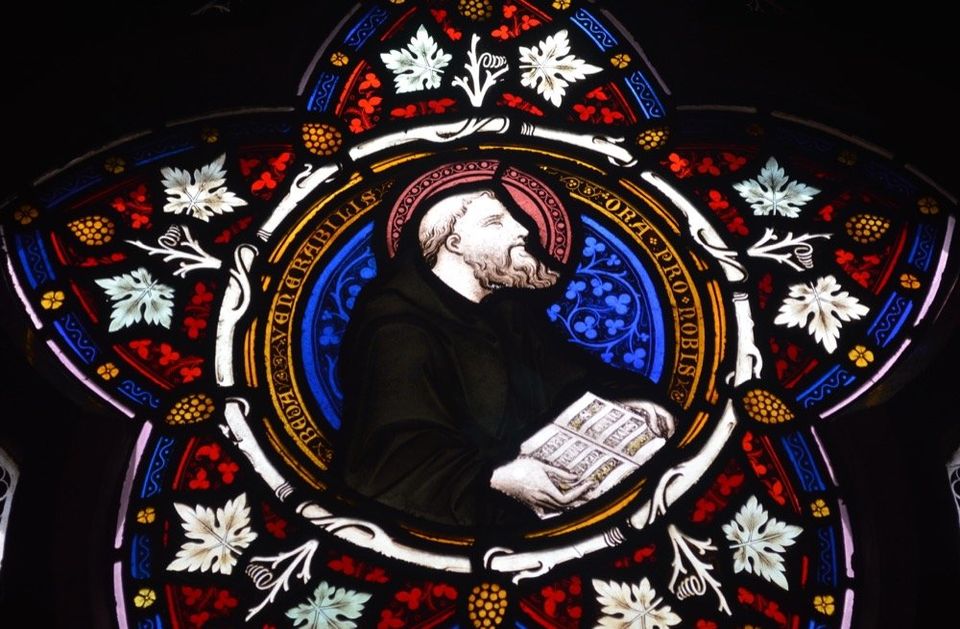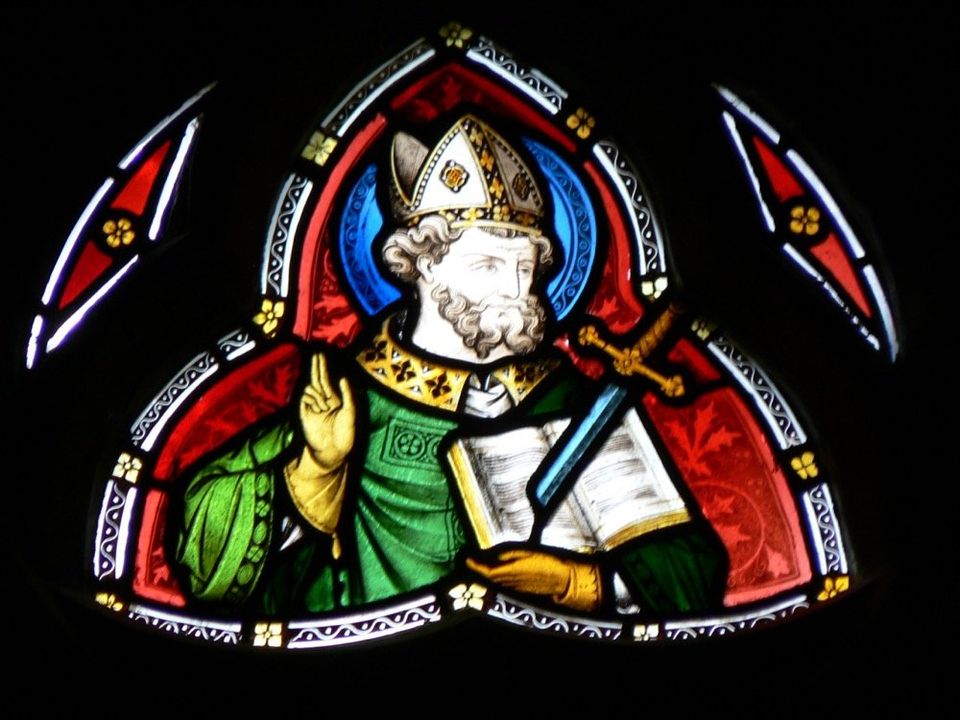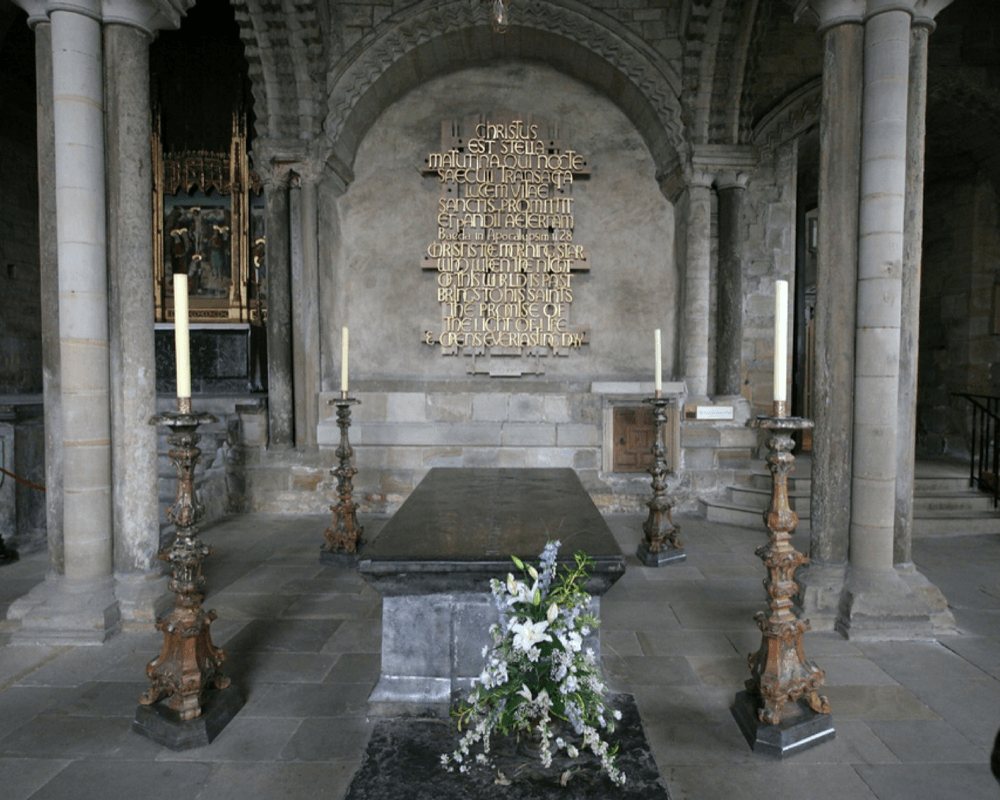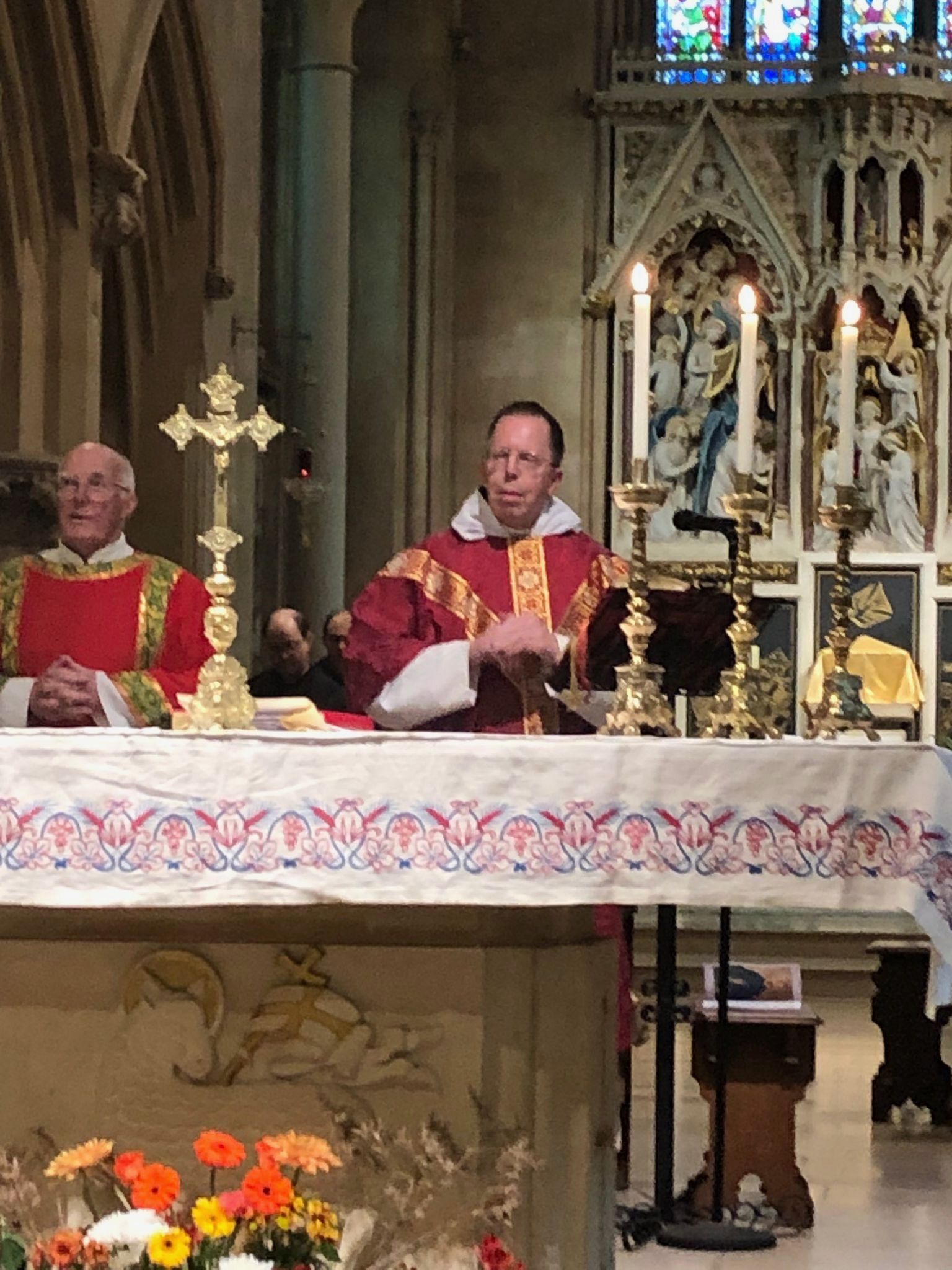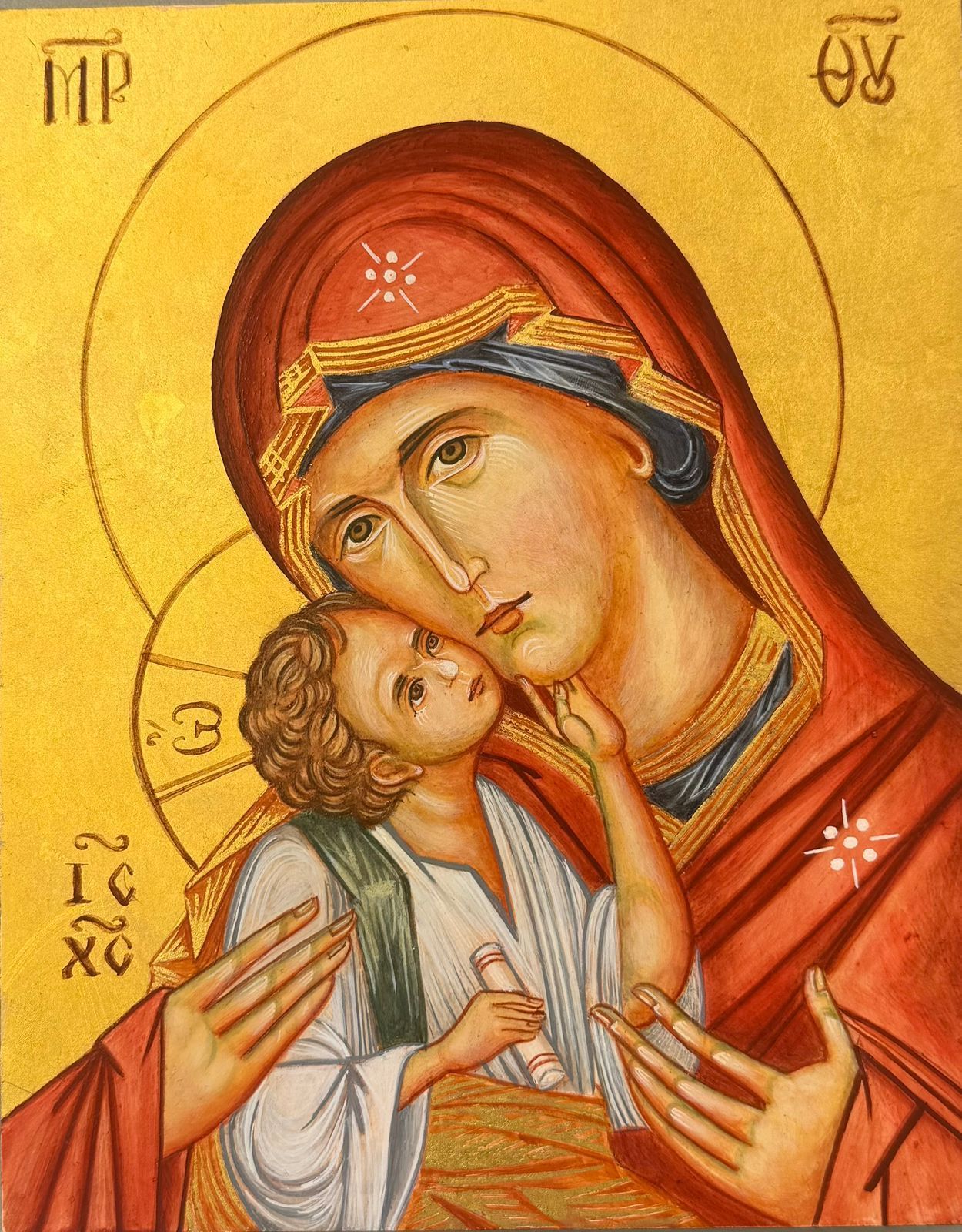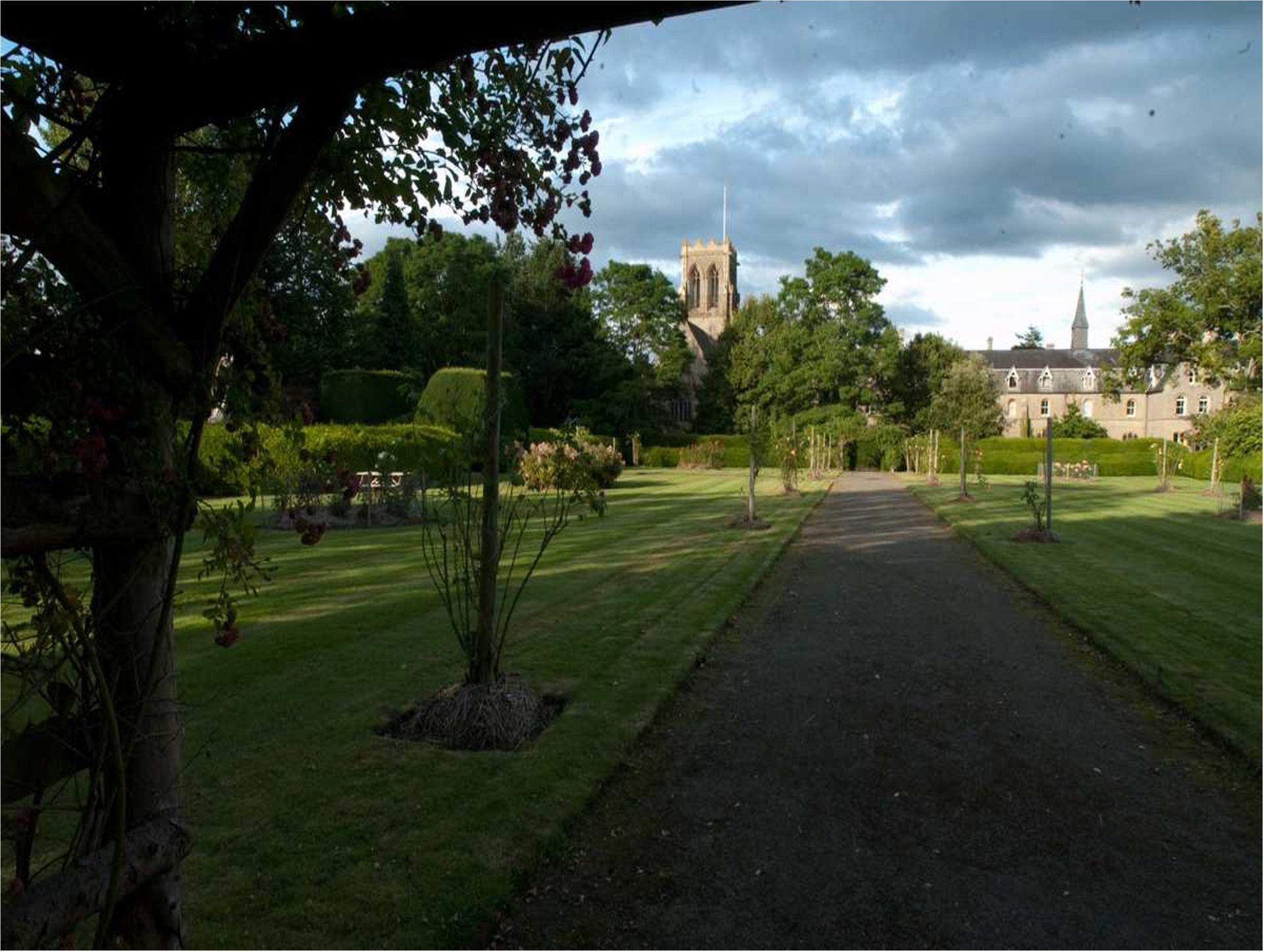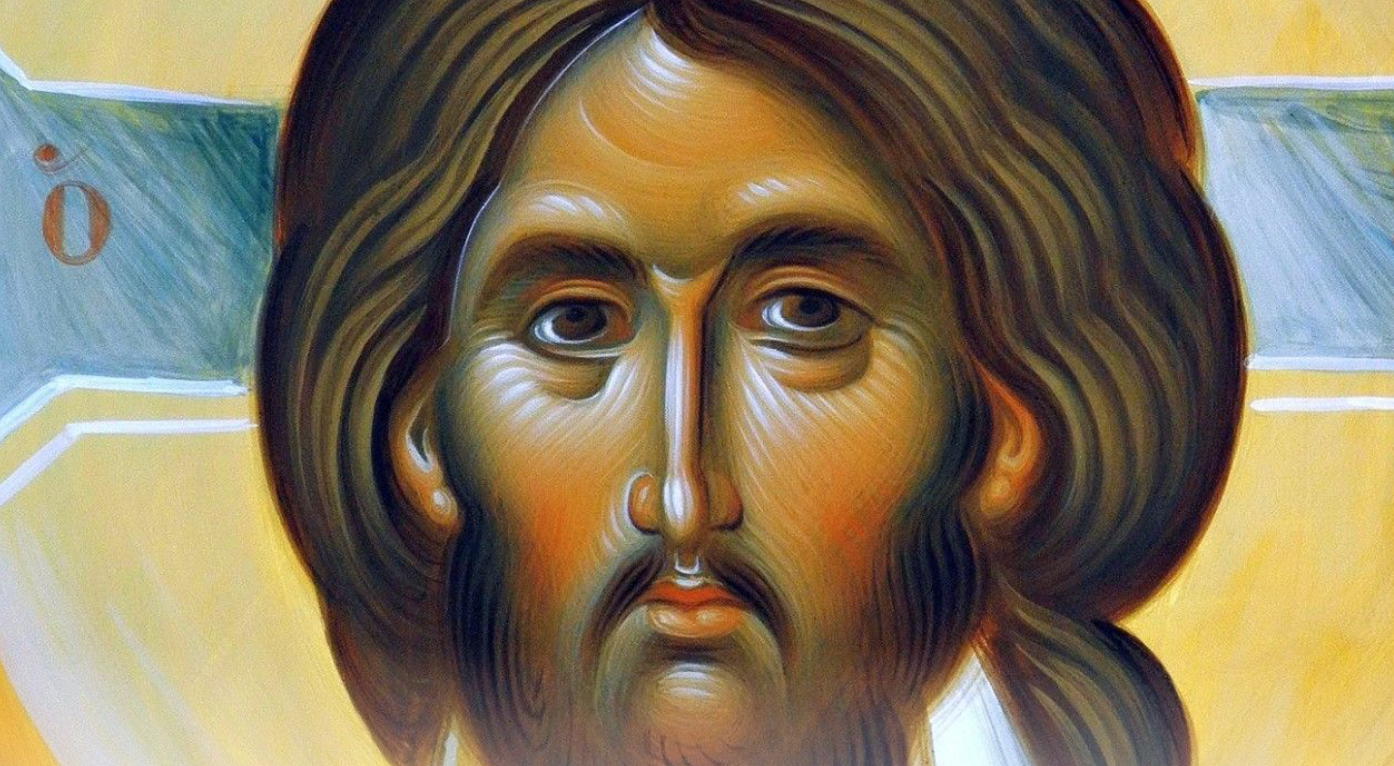St Bede, St Boniface and the Anglo Saxons
Monastic History in Glass and Stone (4)
How the Chapel of St Benedict, in its stained glass and carving tells us something of the whole history of Benedictine Monasticism, the importance of the English Church, and the place of Belmont in this story.
Anglo Saxon England would produce two of the greatest
monastic saints: the much-loved saint of the cloister, the Venerable Bede
(673-735), and the energetic missionary and martyr monk, St Boniface
(c.675-754).
Bede had joined Benet Biscop’s new monastery of Jarrow, but while he was very young, in 686, it was hit by a plague and only he and Coelfrith, the abbot, survived. They sang the services together in the choir. Bede, who passed almost the whole of his life at the monastery, became a model of monastic stability and learning. He wrote that ‘amid the observance of monastic discipline and the daily charge of singing in the church, my delight has always been in learning, teaching and writing.’
In his writings Bede shared his love of the Scriptures, but we most remember him most for the work he holds up for us to see in the stained-glass window: his Ecclesiastical History of the English People ( Historia Ecclesiastica Gentis Anglorum ). As the Father of English History, he gave the English people (the ‘ gens anglorum’ - he was the first person to use the phrase) a sense of their own history, a sense of their own selves, and of how they were unified in Christ.
Everyone seems to love Bede: David Knowles described
him as ‘simple, sane, loyal, trusting,
warm-hearted’ (David Knowles, Saints and Scholars
, p.17). It
seems incredible that just over a hundred years after the faith was first preached
to his forebears, Bede could be such a great exemplar of Christian and monastic
culture and Dante could include him amongst the greats in heaven.
Boniface, the
missionary monk who became the Apostle of Germany, provides such a contrast to
Bede. Born in Crediton, Devon, he became a monk and first was a successful
teacher and preacher. But he soon opted for the missionary life, even refusing
the office of Abbot of his monastery, Nursling in Hampshire. He went to Rome
and was commissioned by Gregory II to preach the Gospel north of the Alps. He
worked tirelessly to establish the Church in Germany and reform the Frankish
Church, encouraging the adoption of St Benedict’s Rule. From this time mention
of other rules begins to disappear and the Rule of St Benedict becomes known
simply as `the Rule’, or ‘the Holy Rule’. Approaching the age of eighty Boniface
was killed by a gang of pagans while awaiting to confirm some converts. The
stained glass shows the saint pierced through by the sword of his martyrdom, holding
the Gospel Book in self-defence.
It was the judgment of Christopher Dawson that Boniface had a deeper influence on the history of Europe than any other Englishman. But Boniface was not alone in this endeavour: he was just one of a wave of Anglo-Saxon missionaries to the Continent including St Willibrord in Friesland, St Amand in Belgium and St Anscar in Sweden.
Bede and Boniface between them represent the richness of monastic life in England, but also a tension between the cloister and the mission, the desert and the market-place. It is a tension that would produce fierce debate in the English Congregation as it re-established monastic life in Britain after the Reformation. Cardinal Basil Hume summed it up well: ‘The tension between the two is a constant in the whole monastic tradition, and monastic history is a commentary on that tension. Should we be in the desert, withdrawn, or should we be in the market place, involved?’ Cardinal Basil Hume OSB, Searching for God, p.30.
The Poet Malcolm Guite has written a sonnet in celebration of St Bede that picks up on the words of St Bede,
written in gold lettering over his tomb in Durham Cathedral, which translates as:
Christ is the morning star who when the night of this world is past
brings to his saints the promise of the light of life
& opens everlasting day.
I kneel above your bones and read your words.
Church-Latin letters, shimmering in gold,
A kingdom-glimmer through the dark and cold,
A revelation gleaming on the shards
Of all our broken lives and promises.
Christus est stella matutina
Qui nocte saeculi transacta
Christ is the morning star. He promises
The light of life when this dark night is past…
Lucem vitae sanctis promittit
You speak for all his Wounded witnesses,
The morning star will shine on us at last.
Scholar and saint, illuminate the way
That opens into everlasting day.
https://malcolmguite.wordpress.com/2013/05/22/a-sonnet-for-the-venerable-bede/

